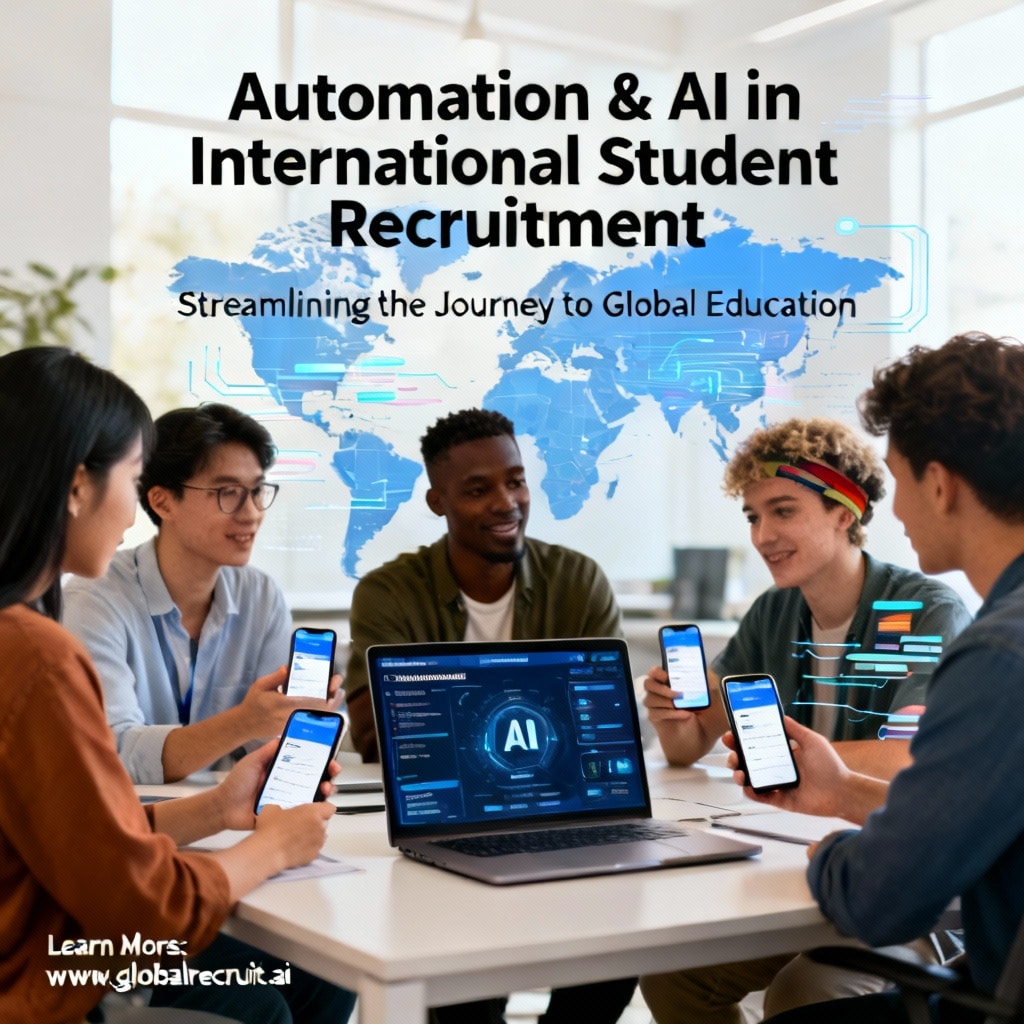Automation and AI in International Student Recruitment — Practical Strategies for Universities and Agents
Automation and AI in International Student Recruitment — Why it matters now
The global student mobility landscape is more competitive and data-driven than ever. Prospective students expect fast, personalized responses and clear, mobile-first experiences. At the same time, admissions teams face larger inquiry volumes with constrained budgets and staffing.
Automation and AI deliver three practical benefits:
- Scale: Automate repetitive tasks (lead screening, document checks, appointment scheduling) so staff can focus on high-value counseling.
- Speed: Fast, accurate responses increase conversion; Study in Turkiye’s fast-admissions model demonstrates the value of reduced turnaround.
- Insights: AI-powered analytics reveal recruitment channel performance, candidate intent, and risk points in the funnel.
Where to apply automation and AI across the recruitment funnel
1. Lead capture and qualification
Automation steps:
- Implement smart web forms and chatbots that capture program, level, and origin country data in a standardized format.
- Use AI scoring models to prioritize leads based on intent signals (time on page, content requested, bot interactions).
- Integrate capture tools with your CRM to ensure immediate follow-up.
Practical example: Study in Turkiye’s portal aggregates program-level data that can feed into automated qualification rules…
2. Application intake and document processing
Automation steps:
- Use form parsing and OCR to extract passport, diploma, and transcript details automatically.
- Implement automated eligibility checks against program criteria to provide instant feedback.
- Offer a self-service dashboard where applicants upload documents and monitor status.
Practical example: Universities that receive high volumes of international applicants benefit from automated document triage…
3. Personalized communications and nurturing
Automation steps:
- Deploy dynamic email and SMS sequences tailored by program, language, and academic level.
- Use AI to optimize send times and content variants for different markets.
- Provide multilingual, AI-driven chat support for common questions.
Practical example: Uskudar University and Bilgi University can deploy tailored nurture sequences for international applicants…
4. Interview and assessment scheduling
Automation steps:
- Integrate scheduling tools with calendar platforms to allow applicants to book interviews and campus visits 24/7.
- Automate reminders and pre-interview document checks.
Practical example: Halic University and Galata University teams can reduce no-shows and shorten time-to-offer…
5. Visa and pre-arrival services
Automation steps:
- Implement task-based checklists and document trackers for visa submission and travel logistics.
- Use case-management tools to coordinate airport pickup, housing, and orientation tasks.
Practical example: Study in Turkiye’s SiT Visa and SiT 360 arrival services illustrate how automation combined…
Building the tech stack — recommended tools and integrations
A practical recruitment tech stack does not require the most expensive platforms. Prioritize integration, data quality, and student experience.
Core components include:
- CRM with education-specific features.
- Document automation.
- Chatbot and conversational AI.
- Scheduling and virtual assessment tools.
- Analytics and attribution platform.
Integration priorities:
- Real-time sync between web capture, CRM, and application portals.
- Single student profile for lifecycle tracking.
Case scenarios — applying automation at scale in Turkiye
Below are realistic scenarios showing measurable gains when automation and AI are applied.
Scenario A — Rapid offers for scholarship-seeking students
Problem: High-demand scholarship applicants expect quick decisions.
Solution: Automate eligibility checks and conditional scholarship offers…
Impact: Conditional offers issued within hours rather than days…
Scenario B — Channel optimization for regional markets
Problem: Recruiting teams lack clear attribution…
Solution: Use multi-touch attribution models that ingest CRM data…
Impact: Focused spend on channels with highest yield…
Scenario C — High-touch programs with low-volume, high-value candidates
Problem: Programs like medicine require personalized assessment and documentation verification.
Solution: Combine AI-driven document validation with a human review workflow…
Impact: Faster, compliant decisions for medical programs…
Implementation roadmap — a 90-day plan for admissions teams and agencies
This practical roadmap helps teams begin quickly without overhaul.
Days 0–30: Audit and quick wins
- Map current recruitment funnel and data flows.
- Identify repetitive tasks for immediate automation.
Days 31–60: Integrate and scale
- Integrate lead capture with CRM and document automation.
- Pilot automated nurture sequences for key programs.
Days 61–90: Optimize and govern
- Deploy analytics dashboards and establish governance policies.
- Train staff on new tools and SOPs.
Measuring ROI — what success looks like
Quantifiable outcomes to expect within 6–12 months:
- 20–40% reduction in manual processing time per application.
- 10–25% improvement in application completion rate…
How Study in Turkiye supports automation-first recruitment strategies
Study in Turkiye is the official platform guiding international students…
Take the Next Step with Study in Turkiye
Explore further with Study in Turkiye, your trusted partner in international education. We can help you navigate the recruitment landscape.

